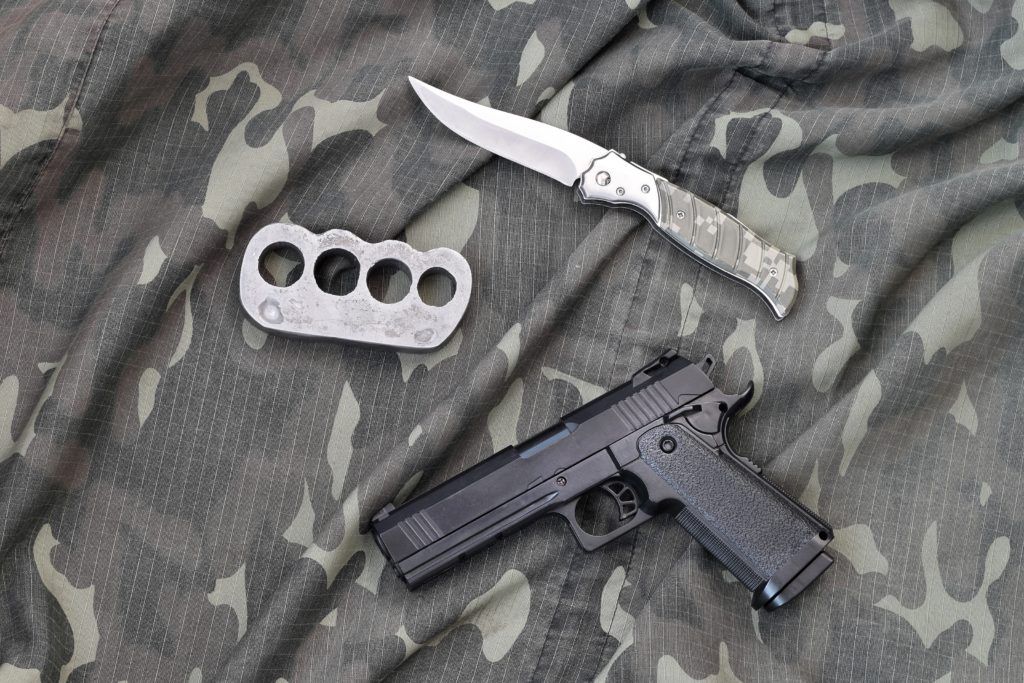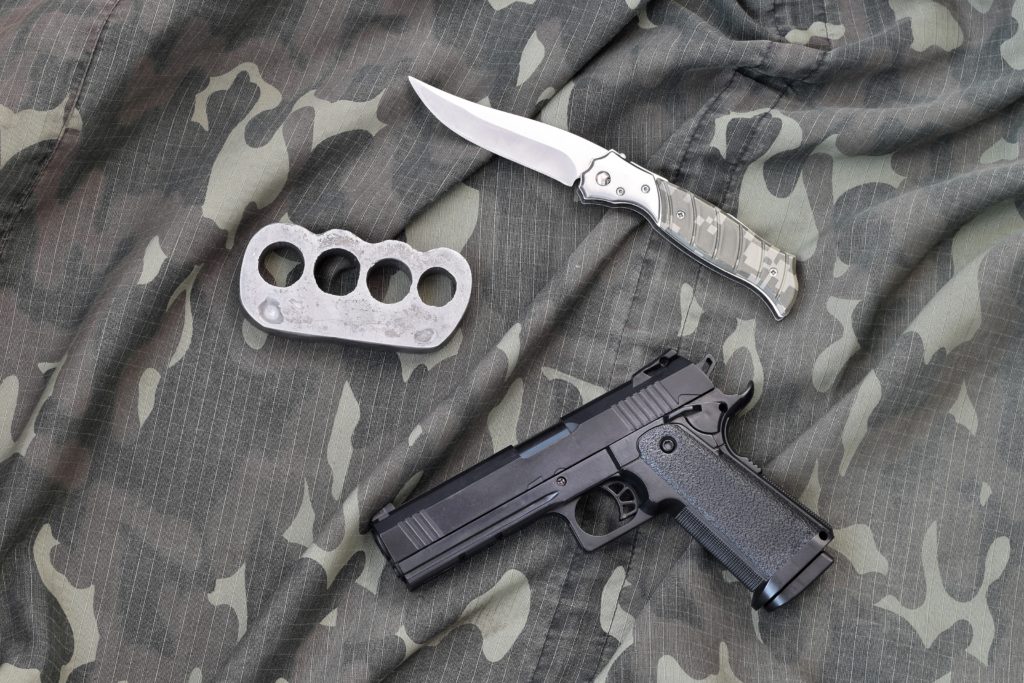Possession of Prohibited Weapons- Pepper Spray/Nunchucks/ Switchblades


Criminal defence lawyers often encounter questions about the legality of weapons other than firearms, such as pepper spray, nunchucks, and knives.
Part III of the Criminal Code deals with “prohibited weapons”. A weapon can be prohibited in three ways. The first is by an explicit prohibition in the Criminal Code. The second is based on the intention of the person carrying the “weapon”.
The third is based on the context in which the person carries the weapon. Under section 91(3) of the Code, it is a crime to be in possession of a “prohibited weapon”. Prohibited weapons are listed in s. 84(1) and its associated regulations. A long list of weapons are prohibited under this section.
Prohibited Weapons Under Section 84(1)
Any device designed to be used for the purpose of injuring, immobilizing or otherwise incapacitating any person by the discharge of tear gas, Mace or other gas, or any liquid, spray, powder or other substance that is capable of injuring, immobilizing or otherwise incapacitating any person.
Also classified as prohibited are any instruments or devices commonly known as “nunchaku”, which are hard non-flexible sticks, clubs, pipes, or rods linked by rope, cord, wire or chain, and any similar instrument or device. Other prohibited devices are those commonly known as “manrikigusari” or “kusari”, hexagonal or other geometrically shaped hard weights or hand grips linked by rope, cord, wire or chain, and any similar instrument or device.
Any finger ring that has one or more blades or sharp objects which can be projected from the surface of the ring is also a prohibited weapon. The list includes any device designed to be capable of injuring, immobilizing or incapacitating a person or an animal by discharging an electrical charge produced by the amplification or accumulation of the electrical current generated by a battery, where the device is of a length of less than 480 mm or bigger, and any similar device.
A crossbow or similar device is considered prohibited if it is designed or altered to be aimed and fired by the action of one hand, whether or not it has been redesigned or altered to be aimed and fired by the action of both hands, or if it has a length not exceeding 500 mm.
Prohibited weapons also comprise the device known as the “Constant Companion”, a belt containing a blade capable of being withdrawn from the belt, with the buckle of the belt forming a handle for the blade, and any similar device.
Any knife commonly known as a “push-dagger” that is designed such that the handle is placed perpendicular to the main cutting edge of the blade and any other similar device other than the aboriginal “ulu” knife, are banned.
Any device having a length of less than 30 cm and resembling an innocuous object but designed to conceal a knife or blade, and the device commonly known as the “knife-comb”, being a comb with the handle of the comb forming a handle for the knife, and any similar device, is also prohibited.
The device known as a “Spiked Wristband”, a wristband to which a spike or blade is affixed, and any similar device, as well as the device commonly known as a “Kiyoga Baton” or “Steel Cobra”and any similar device consisting of a manually triggered telescoping spring-loaded steel whip terminated in a heavy calibre striking tip, are all forbidden.
Finally, the device commonly known as a “Morning Star”, a ball of metal or other heavy material studded with spikes and connected to a handle by a length of chain, rope or other flexible material, and the device known as “Brass Knuckles”, a band of metal with one or more finger holes designed to fit over the fingers of the hand and any similar device, are also considered prohibited weapons.
It Is a Criminal Offence Under Canadian Law?
Under Canadian law, it is a criminal offense to possess any of the weapons listed in section s. 84(1) and the associated regulations. Possession applies to any situation where you have knowledge and control of the object, including owning the weapon, having it on your person, keeping it in your home, car, or storage facility, among others.
While pepper spray is illegal under s. 84(1), there are exceptions. All products with labels containing the words “mace” or “pepper spray” or are originally produced for use on human beings are considered “prohibited weapons” under the Regulations. Conversely, similar products labeled as “dog spray” or “bear spray” aimed for use on animals are not deemed as weapons under s. 84(1).
These products are designed to be carried by individuals who fear animal attacks and fall under the Pest Control Act. Anyone can legally carry these products, unless they intend to use the animal spray for a purpose contrary to the public peace, which would make it illegal under s. 88. However, you are not violating any laws if you carry animal spray due to fear of dogs. If you find yourself a victim of an unprovoked human attack while carrying the animal spray, using the spray in self-defense is within your rights.
Switchblades, butterfly knives, and certain types of daggers are banned under s. 84(1). However, other types of knives such as hunting knives, search and rescue knives, and Swiss Army knives are not prohibited. The legality of carrying a non-prohibited knife under s. 88 depends on whether it is being carried for a purpose contrary to public peace.
It’s crucial to know your rights. In case you are charged with a criminal offense relating to “prohibited weapons” or any other criminal offense, it is suggested to contact our experienced weapons offence lawyers in Toronto.

Jonathan Pyzer, B.A., L.L.B., is an experienced criminal defence lawyer and distinguished alumnus of McGill University and the University of Western Ontario. As the founder of Pyzer Criminal Lawyers, he brings over two decades of experience to his practice, having successfully represented hundreds of clients facing criminal charges throughout Toronto.




